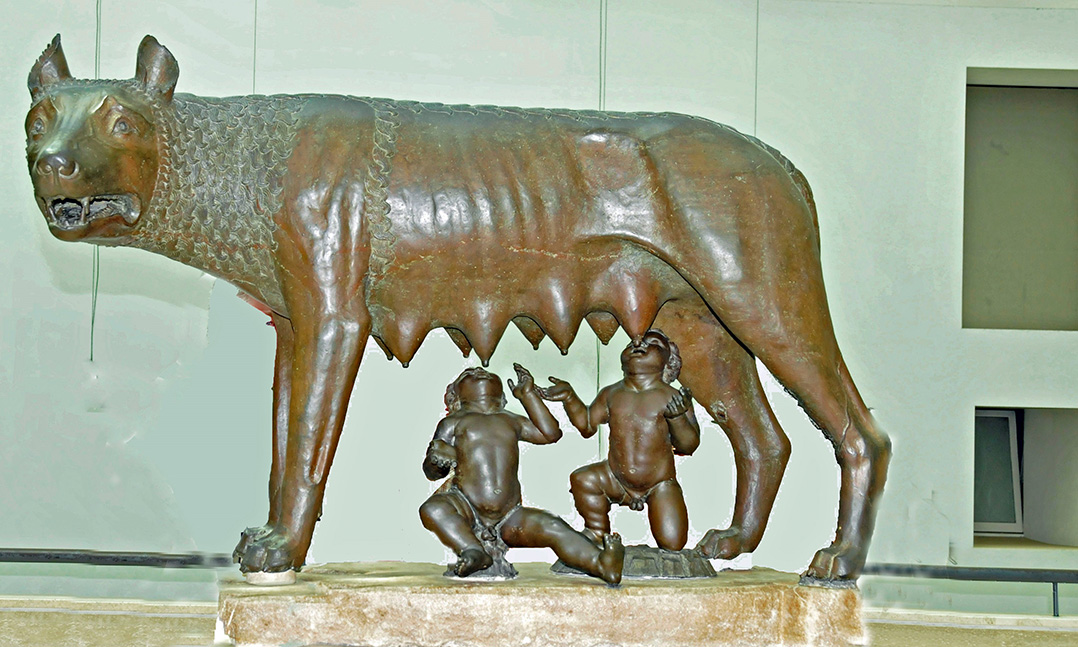Rome’s Capitoline Museum is often considered the world’s first museum. The most famous item in its collection has become the symbol of Rome.
In 1471, Pope Sixtus IV, who also ordered construction of the Sistine Chapel that bears his name, donated a collection of the Catholic Church’s ancient bronze sculptures to the people of Rome and asked that they be housed on Capitoline Hill, one of Rome’s seven hills and the origin of the word “capitol” as the seat of government. During the next 250 years, many important works of ancient Roman art were added to the collection, but access to the collection was limited. In 1734, Pope Clement XII opened the collection to the public, the first time in history (or at least Western history) that a collection of art was made available to people other than its owners and their guests.
Today, the extraordinary treasures of the Capitoline Museum are housed in two buildings in the Piazza del Campidoglio, a trapezoidal plaza atop Capitoline Hill designed by Michelangelo in 1536. The largest works of the collection are two full-size statues of Roman Emperor Marcus Aurelius on horseback, the one inside an A.D. 160 original and the other on the plaza a copy. The most famous work is a bronze sculpture known as the “Capitoline She Wolf,” depicting Romulus and Remus, the legendary founders of Rome, suckling at the breast of the wolf who nurtured them after they had been abandoned as infants. Once thought to have been cast in the fifth century B.C., recent tests, not accepted by everyone, suggest that the “Capitoline She Wolf” was cast in the Middle Ages, with the twins added during the Renaissance. Whatever its history, the “Capitoline She Wolf” has become the symbol of Rome and was the emblem of the 1960 Rome Summer Olympics.



